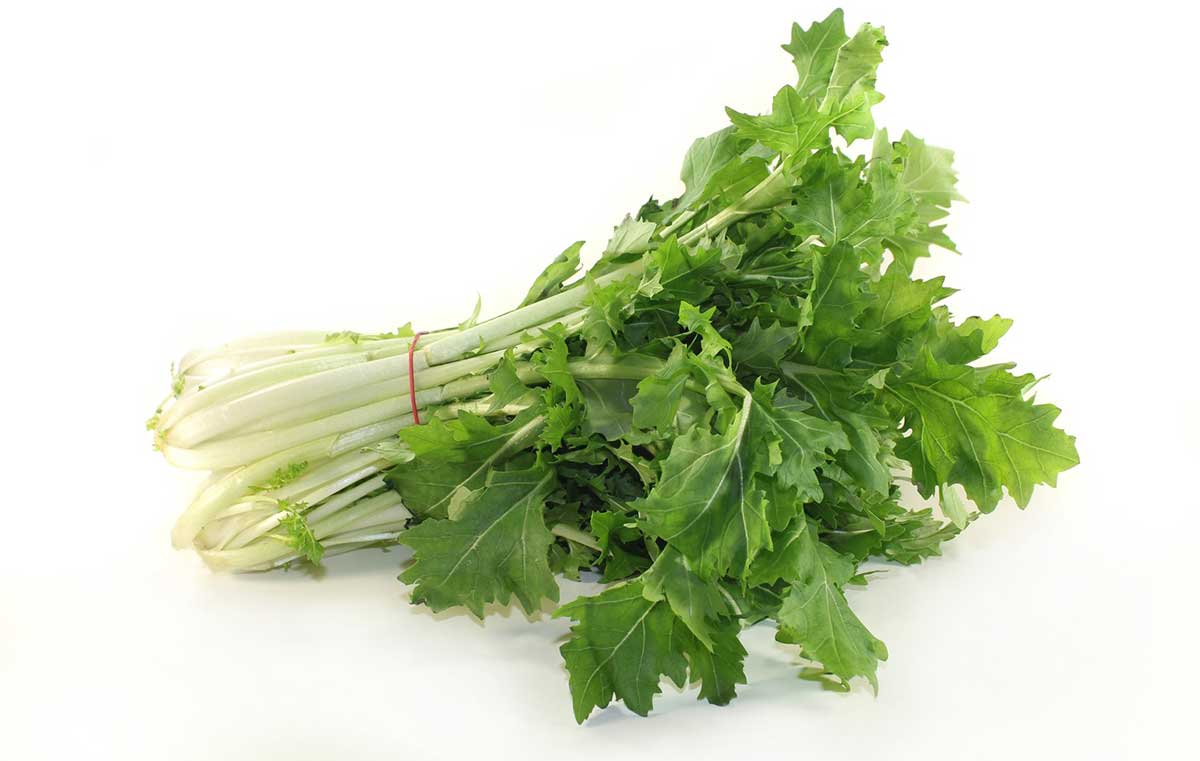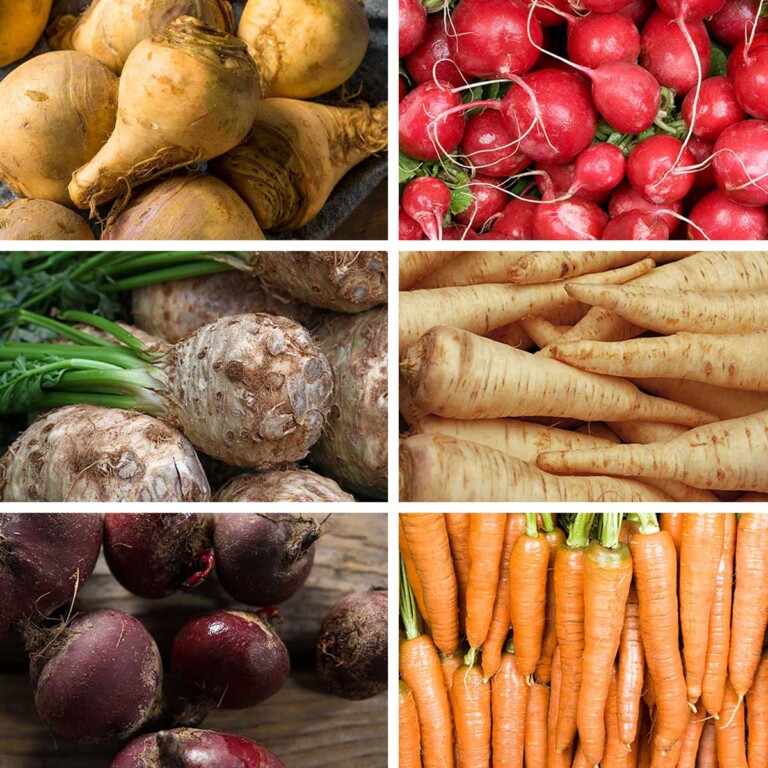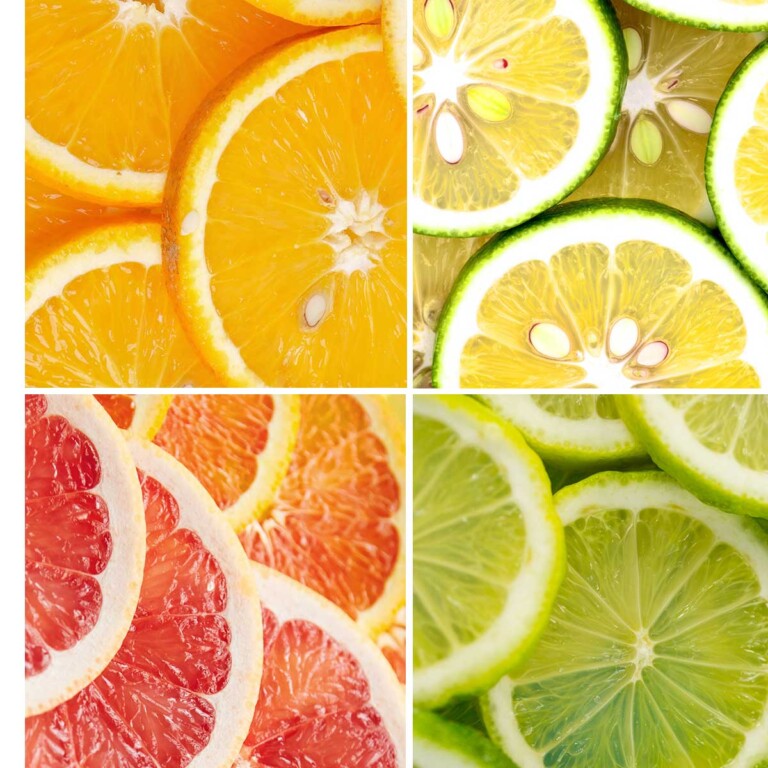Complete Guide on Greens: Collards, Mustards & Turnip Greens
This post may contain affiliate links. If you make purchase after clicking a link, I may receive a commission at no extra cost to you.
Last Updated on November 17, 2023
Do the different types of greens confuse you? Let’s take a look at collard greens Vs mustard greens Vs turnip greens to see what they have in common and how they are different. Learn about nutrition, appearance, taste, and more.

Collard Greens Vs Mustard Greens Vs Turnip Greens
Are you confused by all the different types of leafy green vegetables? Some leafy greens are best used for salads and others have a bitter flavor that taste better when cooked. Leafy greens are one of many types of superfoods, so you’ll want to get to know the different varieties.
These greens are also super nutritions when harvested as microgreens. Let’s take a look at collard greens, mustard greens, and turnip greens and compare the appearance, taste, uses and the nutritional value of each.
Collard Greens
Collard greens are a leafy green vegetable that belongs to the Brassica family, which also includes broccoli, kale, and cabbage.
Appearance
Collards have large, dark green leaves that are smooth in texture. The leaves are thick and sturdy with a slightly waxy surface. They can grow up to 2 feet in length and have a broad shape similar to cabbage leaves.
Taste
These greens have a mild and slightly bitter taste. When cooked properly, they become tender and develop a rich, earthy flavor. Some describe the taste as similar to cabbage or kale but milder.
Uses
Collard greens can be eaten raw in salads or sandwiches for added crunch and nutrition. However, they are most commonly cooked by steaming, boiling, sautéing, or braising. Collard greens make an excellent addition to soups, stews, stir-fries, and side dishes. They can also be stuffed or used as wraps instead of tortillas.
Collard Greens Nutrition
Collards are low in calories but packed with essential vitamins, minerals, antioxidants, and dietary fiber. Here are some key nutrients found in collard greens:
- Vitamins: Collard greens are an excellent source of vitamins A, C, K, E, and several B vitamins including folate (vitamin B9). These vitamins play crucial roles in maintaining healthy vision, boosting the immune system, supporting brain function, promoting cell growth and repair.
- Minerals: Collard greens contain important minerals like calcium for strong bones and teeth; potassium for heart health; magnesium for nerve function; iron for oxygen transport; and manganese for metabolism regulation.
- Antioxidants: Collard greens are rich in antioxidants, including beta-carotene, lutein, and zeaxanthin. These compounds help protect the body against cellular damage caused by harmful free radicals, reducing the risk of chronic diseases such as heart disease and certain types of cancer.
- Dietary Fiber: Collard greens are an excellent source of dietary fiber, which promotes healthy digestion, aids in weight management, and helps regulate blood sugar levels.

Mustard Greens
Mustard greens also belong to the cabbage family of vegetables. They are characterized by their dark green, jagged-edged leaves and a slightly peppery flavor.
Appearance
These greens have broad, elongated leaves with a wrinkled or crinkled texture. The leaves can vary in color from deep green to purplish-green, depending on the variety. Some varieties may have purple or reddish veins running through the leaves.
Taste
Mustard greens have a distinct spicy and tangy flavor. The intensity of the flavor can range from mild to sharp, depending on the maturity of the leaves and personal preference. The younger leaves tend to be milder in taste compared to more mature ones.
Uses
They can be enjoyed raw in salads for a peppery kick or lightly cooked for a more mellow flavor. They are commonly sautéed, stir-fried, steamed, or added to soups and stews. These tasty greens can also be pickled or fermented for longer shelf life and added tanginess.
Mustard Greens Nutrition
Mustard greens have lots of vitamins and minerals and also contain antioxidants that contribute to overall health and may help reduce the risk of chronic diseases.
- Vitamins: Mustard greens are rich in essential nutrients such as vitamins A, C, K, E, and B-complex vitamins like folate and riboflavin.
- Minerals: These greens are also a good source of minerals like calcium, iron, magnesium, potassium, and manganese.
- Antioxidants: Mustard greens are loaded with antioxidants such as beta-carotene and lutein that help protect against cellular damage caused by free radicals.
- Dietary Fiber: Mustard greens are an excellent source of dietary fiber, which can help regulate bowel movements and promote a healthy digestive system. The high fiber content also aids in weight management by providing a feeling of fullness, reducing overeating and promoting satiety.

Turnip Greens
Turnip greens are the leafy green tops of the turnip plant, scientifically known as Brassica rapa.
Appearance
They have deep green leaves that are slightly wrinkled and textured.
Taste
Turnip greens often have a bitter or peppery taste, similar to other leafy greens like kale or mustard greens.
Uses
Turnip greens can be sautéed, steamed, boiled, or added to soups and stews. Some people even enjoy eating them raw in salads for an extra punch of flavor. Turnip greens pair well with ingredients like garlic, onions, lemon juice, and various types of vinegar.
Collard Greens Nutrition
- Vitamins: These greens are an excellent source of vitamin K, vitamin A (in the form of beta-carotene), vitamin C, and folate.
- Minerals: Additionally, turnip greens contain minerals such as calcium, magnesium, potassium, and iron.
- Antioxidants: In terms of antioxidants, turnip greens contain compounds like glucosinolates and flavonoids that have been linked to various health benefits including reduced inflammation and improved heart health.
- Dietary Fiber: These leafy greens also provide dietary fiber which aids in digestion and promotes a healthy gut.

Comparing Collard Greens, Mustard Greens & Turnip Greens
While they share some similarities, there are also notable differences in terms of nutrition, taste, appearance, and ways to cook these three types of leafy green vegetables.
Nutrition: Collard Greens Vs Mustard Greens Vs Turnip Greens
- Collard greens: These dark green leafy vegetables are rich in vitamins A, C, and K. They are also a good source of folate and calcium.
- Mustard greens: They are high in vitamins A, C, and K. Mustard greens also provide significant amounts of iron and fiber.
- Turnip greens: Similarly packed with vitamins A, C, and K, turnip greens offer additional benefits such as being a good source of antioxidants and minerals like manganese.
Taste: Collard Greens Vs Mustard Greens Vs Turnip Greens
- Collard greens: Collard greens have a mild flavor with slightly bitter undertones. They are often described as earthy or cabbage-like in taste.
- Mustard greens: Mustard greens have a distinct peppery flavor that can range from mild to spicy depending on the variety. They add a tangy kick to dishes.
- Turnip greens: Turnip greens have a slightly bitter taste similar to collard greens but with a hint of sweetness. They have a milder flavor compared to mustard greens.
Appearance: Collard Greens Vs Mustard Greens Vs Turnip Greens
- Collard greens: Collard leaves are large and broad with a smooth texture. The leaves are typically dark green in color.
- Mustard greens: Mustard leaves vary in shape but are generally more frilly or serrated compared to collards. The leaves can be bright green or reddish-purple depending on the variety.
- Turnip greens: Turnip leaves resemble mustard leaves but tend to be smaller and more tender. They have an oval shape with jagged edges.
Culinary uses: Collard Greens Vs Mustard Greens Vs Turnip Greens
- Collard greens: Collards are commonly used in Southern cuisine for dishes like collard wraps, stews, and sautés. They are also popular in African and Brazilian cooking.
- Mustard greens: Mustard greens are frequently used in Asian cuisines such as stir-fries, soups, and pickled preparations. They can also be enjoyed raw in salads.
- Turnip greens: Turnip greens are often cooked like collards or mustard greens. They can be sautéed, steamed, or added to soups and stews. The smaller leaves can be used raw in salads.
How To Select Greens
- Look for bold/bright color: Choose greens that have a deep, bold color. This indicates freshness and high nutrient content. Avoid greens that appear dull or discolored.
- Check for crispness: The leaves should be crisp and firm to the touch. Avoid greens that are wilted or have soft spots, as this can indicate age or spoilage.
- Inspect for freshness: Take a close look at the leaves to ensure they are fresh and free from blemishes or signs of decay. Avoid greens with yellowing or brown spots.
- Consider size: Opt for medium-sized leaves rather than very large ones. Smaller leaves tend to be more tender and flavorful.
Healthy Greens
- Deep, bold color
- Firm and crisp leaves
- Free from blemishes or yellowing
Unhealthy Greens
- Leaves with a dull color
- Wilted or soft spots
- Yellowing or brown spots
How to Store Greens
To store fresh leafy greens like mustard, turnip, and collards in the fridge, you’ll want to follow these steps. To extend the life of the greens, don’t wash them before storing, rather clean the leaves when you are ready to use them.
- Start by removing any rubber bands, twist ties, or packaging that the greens may come with.
- Take a large resealable plastic bag or an airtight container and line it with a paper towel. This will help absorb any excess moisture and keep the greens fresh.
- Place the greens into the lined bag or container. Make sure not to overcrowd them as this can lead to faster spoilage.
- Seal the bag or container tightly, making sure there are no air pockets inside.
- Store the greens in the crisper drawer of your refrigerator, which is designed to maintain higher humidity levels and keep produce fresher for longer.
- It is recommended to use the greens within 3-5 days for optimal freshness and flavor. However, some heartier varieties like collards can last up to a week or longer if stored properly.
How to Clean Greens
It’s best to wash the green leaves just prior to use, instead of before storing. Here’s the easiest way to clean them.
- Fill a sink or large bowl with cold water.
- Separate the leaves of the greens and place them in the water.
- Swish the leaves around to remove any dirt or debris.
- Remove the leaves from the water and discard any damaged or wilted ones.
- Pat dry with a paper towel.
How to Cut Greens
You may need to cut your greens in fairly uniform sizes for various recipes. Follow these steps:
Removing Tough Stems:
- Start by laying each leaf flat on a cutting board.
- Next, using a sharp knife, carefully trim off the tough stems at the base of each leaf.
- Then, discard the stems or save them for another use.
Cutting into Bite-Sized Pieces:
- Stack several leaves on top of each other.
- Roll them up tightly into a cigar shape.
- Slice across the roll to create thin strips of greens.
Ways to Cook Greens
Mustard greens, collard greens, and turnip greens can be cooked in various ways as a delicious side dish. Here are some ways you can cook these fresh greens.
- Steaming: Steaming greens is a healthy and simple way to cook them. Place the greens in a steamer basket over boiling water and steam until tender, usually for about 5-7 minutes.
- Sautéing: Sautéing greens involves quickly cooking them in a hot pan with some oil, butter, or bacon grease. Start by heating the oil or butter in a pan, add the chopped greens, and cook until they wilt and become tender. Add salt and black pepper to taste.
- Boiling: Boiling is another popular method for cooking greens. Simply bring a pot of water to a boil, add the washed and chopped greens, and cook until they are tender. Be careful not to overcook them to retain their color and nutrients.
- Braising: Braising is a slow-cooking method that involves simmering greens in liquid until they become tender. You can use broth, chicken stock, or even water as the braising liquid, which makes a delicious pot liquor. Add a dash of apple cider vinegar and some ham hocks to give it a great flavor.
- Grilling: Grilling greens gives them a delicious smoky flavor. Brush the cleaned and trimmed leaves with olive oil, sprinkle with salt and pepper, then place them on a preheated grill. Cook for a few minutes on each side until slightly charred but still crisp.
- Stir-frying: Stir-frying is a quick and flavorful way to cook greens. Heat some oil in a wok or skillet, add the sliced or chopped greens along with other vegetables if desired, stir constantly over high heat until they are wilted yet still have a nice, bold green color.
Other Types of Greens
There are so many other types of leafy greens that you can add to your diet. Here are some common varieties.
Spinach
Spinach is known for its mild taste and tender texture. It is rich in iron, calcium, and vitamins A and C. There are many health benefits of spinach juice, and it also helps increase the health benefits of smoothies when added to them.
Kale
Kale is a nutrient-dense leafy green that has a slightly bitter flavor and sturdy leaves that hold up well when cooked. It’s an excellent source of vitamins A, C, and K, as well as fiber. Drinking kale juice is a super great way to get all the vitamins from this green.
Swiss Chard
Swiss chard is a leafy green with colorful stems (usually red or yellow) and dark green leaves. It has a mild flavor that is similar to spinach but slightly earthier. Swiss chard is packed with antioxidants, vitamins A and K, and minerals like magnesium and potassium. This Swiss chard recipe is a popular one in our home.
Romaine Lettuce
Romaine lettuce is a crisp variety of lettuce with long, sturdy leaves that have a slight bitterness to them. It is commonly used in salads but can also be grilled or used as lettuce wraps for sandwiches or tacos.
Arugula
Arugula is a peppery-tasting leafy green that adds a distinctive flavor to salads, sandwiches, and pizzas. It has tender leaves with a slightly spicy kick. There are a lot of health benefits of arugula.
Watercress
Watercress is an aquatic plant with small, round leaves and a peppery taste. It is often used in salads or as a garnish for soups and sandwiches. Watercress is rich in vitamins A, C, and K, as well as calcium and iron.
Bok Choy
Bok choy, also known as Chinese cabbage, is commonly used in Asian cuisine. It has crisp stalks and dark green leaves with a mild flavor. Bok choy is an excellent source of vitamins A and C, as well as calcium and potassium. We love eating sauteed baby boc choy.
Dandelion Greens
Dandelion greens have a have a slightly bitter taste that is similar to arugula or radicchio. They can be eaten raw in salads or added to sandwiches for a refreshing crunch. They can also be cooked by sautéing, steaming, or boiling them, which helps to reduce their bitterness and enhance their flavor.
Beet Greens
Beet greens are the leafy green tops of the beetroot plant. There are a ton of health benefits of beetroot greens. They taste great added to salads and smoothies.
Final Summary
These types of greens make a great addition to a healthy diet. Eating a variety of foods, such as leafy veggies, root vegetables, cruciferous vegetables, and beans and legumes can impact your health in a variety of ways. Whether you eat them as a salad green or in a Southern mixed greens recipe, adding your favorite greens to a balanced diet is the best way to get all the nutrients from these vegetables.
Sources
- https://foodstruct.com/compare/turnip-greens-vs-mustardgreens-raw
- https://www.urmc.rochester.edu/encyclopedia/content.aspx?contenttypeid=76&contentid=11569-1
- https://www.medicalnewstoday.com/articles/285961
- https://fdc.nal.usda.gov/fdc-app.html#/food-details/170061/nutrients
- https://medicalnewstoday.com/articles/277957
- https://www.healthline.com/nutrition/collard-greens-benefits
- https://www.healthline.com/nutrition/mustard-greens-nutrition
- https://www.webmd.com/diet/health-benefits-mustard-greens







